Discover Washington’s culinary treasures! This guide, brought to you by FOODS.EDU.VN, explores the iconic dishes and fresh ingredients that define the Evergreen State. From succulent seafood to bountiful harvests, uncover the delectable secrets of Washington’s cuisine. Let’s dive into the world of Pacific Northwest flavors, savoring regional specialties and culinary traditions that will tantalize your taste buds and leave you craving for more, including the freshest produce and innovative culinary scene.
1. Seafood Sensations: Diving into Washington’s Coastal Delights
Washington State, with its extensive coastline and pristine waters, is renowned for its exceptional seafood. From the mighty salmon to the delectable Dungeness crab, the state’s marine bounty offers a diverse range of flavors and culinary experiences. Let’s explore some of the most iconic seafood dishes that define Washington’s culinary identity.
1.1. Salmon: A Pacific Northwest Icon
Salmon is arguably the most recognizable symbol of Washington’s culinary heritage. This versatile fish graces menus across the state, prepared in countless ways to highlight its rich flavor and delicate texture.
- Varieties: Pacific salmon encompasses six distinct species: Chinook (King), Coho, Sockeye, Chum, Pink, and Steelhead. Chinook, Coho, and Sockeye are the most commonly found in restaurants and markets.
- Preparations: From smoked salmon platters to cedar-plank grilled fillets, the possibilities are endless. Other popular preparations include poached, pan-fried, or baked salmon, each offering a unique culinary experience.
- Sustainability: Washington State is committed to sustainable salmon fishing practices to ensure the preservation of this valuable resource. Many restaurants and seafood providers prioritize sourcing salmon from responsibly managed fisheries.
1.2. Dungeness Crab: A Coastal Treasure
Named after the town of Dungeness on the Olympic Peninsula, the Dungeness crab is a true delicacy. Its sweet, succulent meat is prized by seafood lovers worldwide.
- Harvesting: Both recreational and commercial crabbers harvest Dungeness crab in Washington’s waters. Recreational crabbers alone pull in over 1.5 million pounds annually.
- Availability: Many crabbing areas are open year-round, providing ample opportunities to enjoy this coastal treasure. The Washington State Department of Fish & Wildlife provides information on crabbing locations and license requirements.
- Culinary Uses: Dungeness crab can be enjoyed steamed, boiled, or grilled. Its meat is also used in a variety of dishes, including crab cakes, salads, and pasta.
1.3. Geoduck: An Oddity Worth Trying
Pronounced “GOO-ee-duck”, the geoduck is the world’s largest burrowing clam. These massive clams can live for over 140 years and weigh between 1 and 3 pounds.
- Abundance: Geoducks are abundant in the inland waters of Puget Sound, making them a readily available local delicacy.
- Preparation: Chefs in Seattle and Olympia have embraced the geoduck, featuring it in innovative and creative dishes. It can be eaten raw as sashimi, or cooked in stir-fries, soups, and stews.
- Flavor Profile: The geoduck has a distinct, slightly sweet flavor and a crunchy texture, making it a unique and memorable culinary experience.
1.4. Oysters: A Taste of the Pacific
Washington State has a long and storied history of oyster cultivation. Today, the state is a major producer of oysters, with Willapa Bay on the southwest coast accounting for about 70% of the state’s production.
- Varieties: Oyster lovers will appreciate the diverse range of varieties available, including Pacific, Olympia, Summerstones from Hood Canal, and Virginicas grown by Taylor Shellfish Farms.
- Oyster Bars: Seattle and other coastal cities boast numerous oyster bars where you can sample the freshest oysters, often served raw with a squeeze of lemon or a dash of mignonette sauce.
- Sustainability: Many oyster farms in Washington employ sustainable aquaculture practices to minimize their environmental impact and ensure the long-term health of oyster populations.
2. From the Orchard to the Table: Exploring Washington’s Agricultural Bounty
Beyond its seafood, Washington State is also a leading producer of a wide variety of fruits, vegetables, and other agricultural products. The state’s fertile soil and favorable climate contribute to its reputation as an agricultural powerhouse.
2.1. Apples: The Evergreen State’s Signature Fruit
Washington is the leading apple-producing state in the United States, harvesting between 10 and 12 billion apples annually. The state’s apple industry is a significant contributor to the local economy, providing jobs and supporting communities throughout the region.
- Varieties: From sweet to tart, Washington offers an apple for every palate. Popular varieties include Red Delicious, Golden Delicious, Gala, Fuji, Granny Smith, Braeburn, Honeycrisp, Cripps Pink, and Cameo.
- Apple Cideries: A growing number of cideries are popping up across the state, offering visitors the chance to sample locally produced hard cider. These cideries often source their apples directly from local orchards, creating a true “orchard-to-glass” experience.
- Health Benefits: Apples are a good source of fiber, vitamins, and antioxidants, making them a healthy and delicious snack.
2.2. Rainier Cherries: A Northwest Jewel
Named after Mount Rainier, these distinctive yellow-red cherries are a true Northwest specialty. Developed in 1952 as a cross between the Bing and Van varieties, Rainier cherries are prized for their sweetness and delicate flavor.
- Harvest Season: Rainier cherries ripen in June and July, making them a summertime treat.
- Growing Regions: The Yakima Valley and north-central Washington are the primary growing regions for Rainier cherries and other sweet cherry varieties.
- Roadside Stands: During the summer season, roadside fruit stands throughout Washington offer fresh-picked Rainier cherries, providing a taste of the local harvest.
2.3. Red Raspberries: A Berry Delight
Washington State is a leader in red raspberry production, with Whatcom County accounting for approximately 85% of the raspberries grown in the United States.
- U-Pick Farms: Many u-pick farms in Washington allow visitors to harvest their own red raspberries during the summer months, providing a fun and interactive experience.
- Culinary Uses: Red raspberries are delicious eaten fresh, but they are also used in jams, pies, and other desserts.
- Health Benefits: Raspberries are packed with vitamins, antioxidants, and fiber, making them a nutritious addition to any diet.
2.4. Rhubarb: The Pie Capital’s Claim to Fame
Rhubarb thrives in Washington’s climate, making the state the largest producer of rhubarb in the United States. Pierce County is particularly known for its rhubarb production.
- Sumner, WA: The town of Sumner proudly proclaims itself the “Rhubarb Pie Capital of the World” and hosts the annual Rhubarb Days festival to celebrate this versatile vegetable.
- Culinary Uses: While technically a vegetable, rhubarb is most often used in sweet dishes like pies, crumbles, and jams. Its tart flavor pairs well with sugar and other fruits.
- Growing Season: Rhubarb is typically harvested in the spring, providing a welcome burst of flavor after the long winter months.
2.5. Lentils: A Sustainable Protein Source
Washington’s Palouse region is a major lentil-producing area, with over 62,000 acres dedicated to lentil cultivation.
- National Lentil Festival: The town of Pullman hosts the National Lentil Festival each August, celebrating the versatility and nutritional benefits of this humble legume.
- Sustainability: Lentils are a sustainable source of plant-based protein, making them an increasingly popular choice for vegetarians and vegans.
- Culinary Uses: Lentils can be used in soups, stews, salads, and dips. They are also a key ingredient in many vegetarian and vegan dishes.
3. Unique Flavors and Local Specialties: Exploring Washington’s Culinary Landscape
Beyond the well-known seafood and agricultural products, Washington State boasts a number of unique flavors and local specialties that are worth exploring.
3.1. Lavender: The Scent of the Olympic Peninsula
The town of Sequim on the Olympic Peninsula bills itself as the “Lavender Capital of North America”.
- Lavender Fields: Every summer, dozens of lavender fields burst into fragrant bloom, creating a stunning visual spectacle.
- Lavender Festival: Sequim hosts a Lavender Festival each July, celebrating the plant’s beauty and versatility.
- Culinary Uses: While often used in oils and beauty products, edible lavender flowers can also be incorporated into teas, baked goods, and other culinary creations.
3.2. Beer Made with Local Hops: A Craft Beer Paradise
Washington’s Yakima Valley accounts for over 70% of the total hop acreage in the United States.
- Craft Beer Scene: Hops fuel Washington’s thriving craft beer scene, with breweries across the state utilizing locally grown hops to create a wide range of flavorful beers.
- Fresh Hop Ale Festival: The region embraces its hop heritage with tours and the annual Fresh Hop Ale Festival, celebrating the harvest season and the unique flavors of fresh hops.
- Yakima’s Beer Bus: Thirsty visitors can explore hop country on Yakima’s beer bus, the Little Hopper, sampling beers from local breweries.
3.3. Chanterelles: A Foraged Forest Treasure
Every fall, mushroom foragers venture into Washington’s forests in search of the elusive chanterelle mushroom.
- Culinary Versatility: Chefs prize chanterelles for their wonderful aroma and versatility in the kitchen.
- Flavor Profile: These golden-brown mushrooms have a distinctive, earthy flavor that enhances a variety of dishes.
- Seasonal Delicacy: Chanterelles are a seasonal delicacy, appearing on menus throughout the state during the fall months.
4. A Deep Dive into Washington’s Culinary Identity: Table
| Food Item | Description | Key Regions | Seasonality | Common Preparations |
|---|---|---|---|---|
| Salmon | Pacific salmon (Chinook, Coho, Sockeye, etc.) known for rich flavor and versatility. | Coastal regions, Puget Sound | Varies by species | Smoked, grilled, baked, poached, cedar-planked |
| Dungeness Crab | Sweet and succulent crab named after Dungeness, WA. | Olympic Peninsula, Puget Sound | Year-round | Steamed, boiled, crab cakes, salads, pasta dishes |
| Geoduck | World’s largest burrowing clam with a unique flavor and crunchy texture. | Puget Sound | Year-round | Sashimi, stir-fries, soups |
| Oysters | Wide variety of oysters grown in Washington’s waters. | Willapa Bay, Puget Sound, Hood Canal | Year-round | Raw, grilled, fried, Rockefeller |
| Apples | Leading producer of diverse apple varieties. | Yakima Valley, Wenatchee | Fall | Fresh eating, cider, pies, sauces |
| Rainier Cherries | Sweet, yellow-red cherries developed in Washington. | Yakima Valley, North-Central Washington | Summer | Fresh eating, desserts |
| Red Raspberries | Leader in red raspberry production. | Whatcom County | Summer | Fresh eating, jams, pies, desserts |
| Rhubarb | Tart vegetable used in sweet dishes. | Pierce County | Spring | Pies, crumbles, jams |
| Lentils | Sustainable source of plant-based protein. | Palouse Region | Fall | Soups, stews, salads |
| Lavender | Edible flowers used in various culinary applications. | Sequim, Olympic Peninsula | Summer | Teas, baked goods, savory dishes |
| Local Hop Beer | Craft beers brewed with locally grown hops. | Yakima Valley, Statewide | Year-round | Various beer styles (IPA, Pale Ale, etc.) |
| Chanterelles | Prized wild mushrooms with a unique flavor and aroma. | Forests throughout Washington | Fall | Sautéed, soups, sauces |
| Walla Walla Onion | Sweet onion variety with a mild flavor. | Walla Walla Valley | Summer | Salads, cooking |
| Asparagus | Washington Grown Asparagus is available from April to June. | Central Washington | Spring | Grilled, Roasted, Stir Fried |
| Wild Berries | A variety of wild berries like Huckleberries, Salmonberries, and Thimbleberries are found across the state. | Mountainous regions | Late Summer to Early Fall | Fresh eating, Jams, Pies |
| Morels | Similar to Chanterelles, these are another type of wild mushroom. | Forests throughout Washington | Spring | Sautéed, Soups, Sauces |
| Pears | Includes varieties such as Bartlett, D’Anjou, Bosc, and Comice. | Wenatchee, Yakima Valley | Late Summer to Fall | Fresh eating, salads, desserts, canning |
| Honeycrisp Apples | Known for their crisp texture, balanced sweetness, and juiciness. | Yakima Valley, Okanogan County | Fall | Snacking, salads, pies |
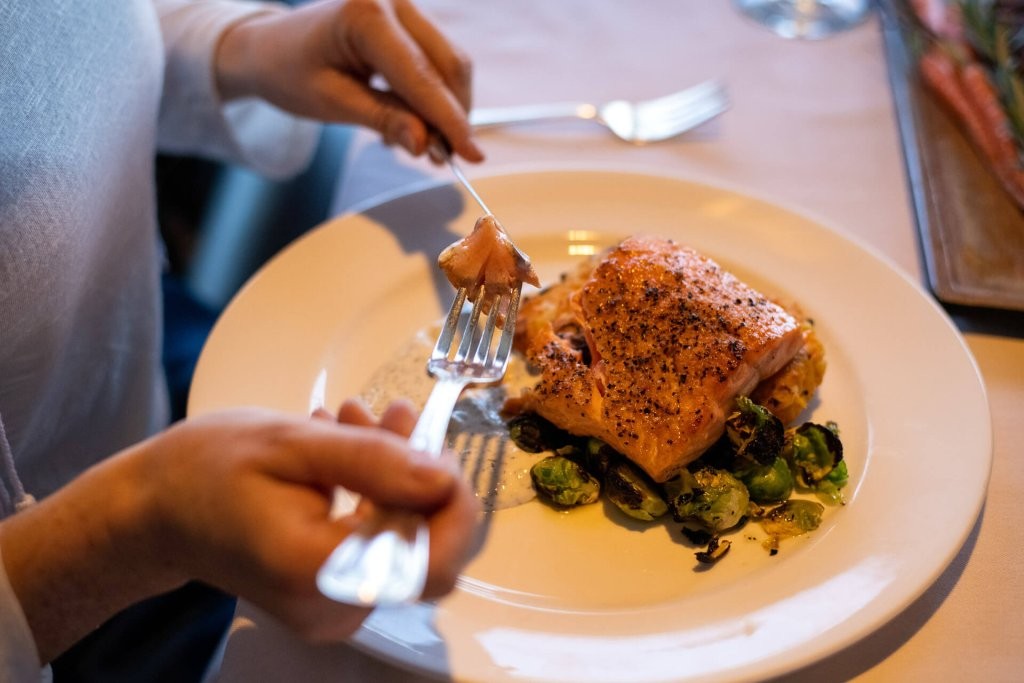
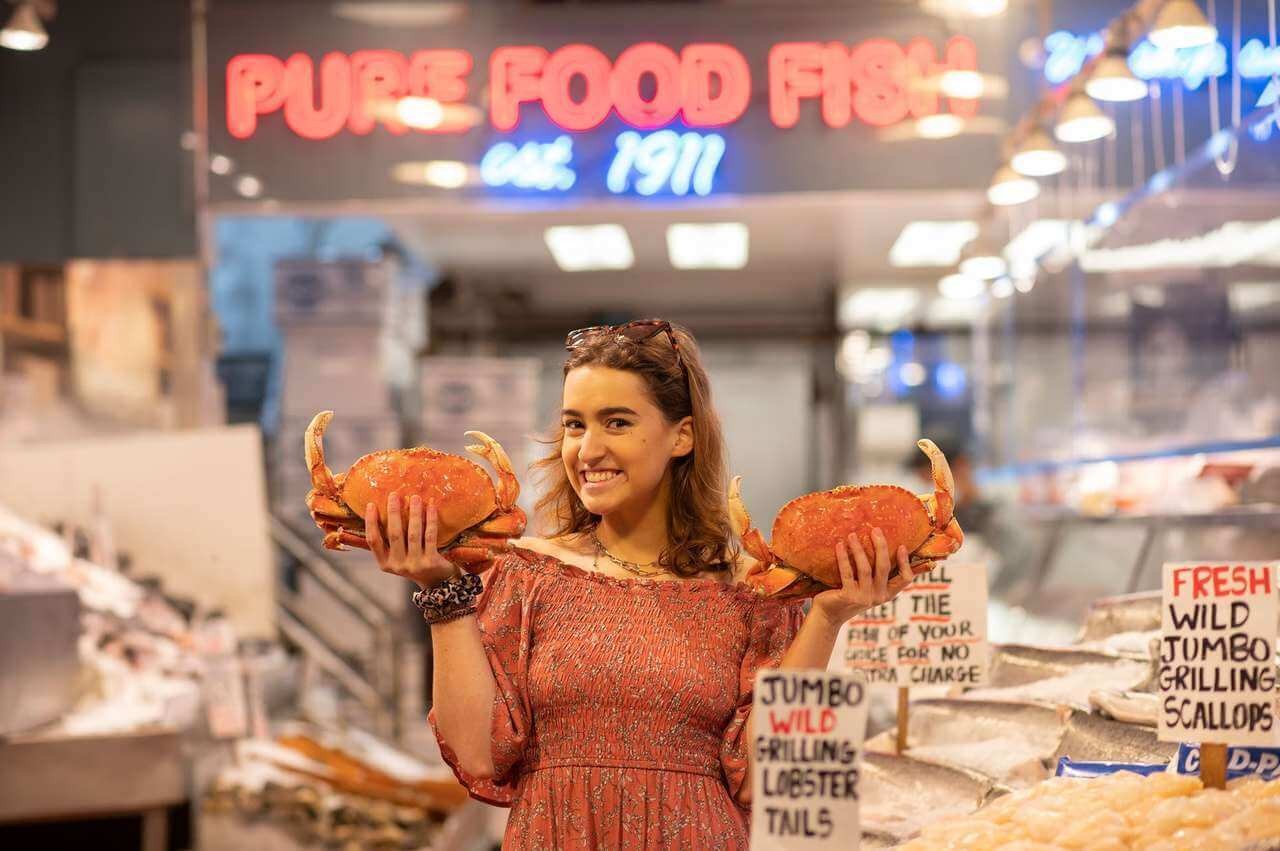
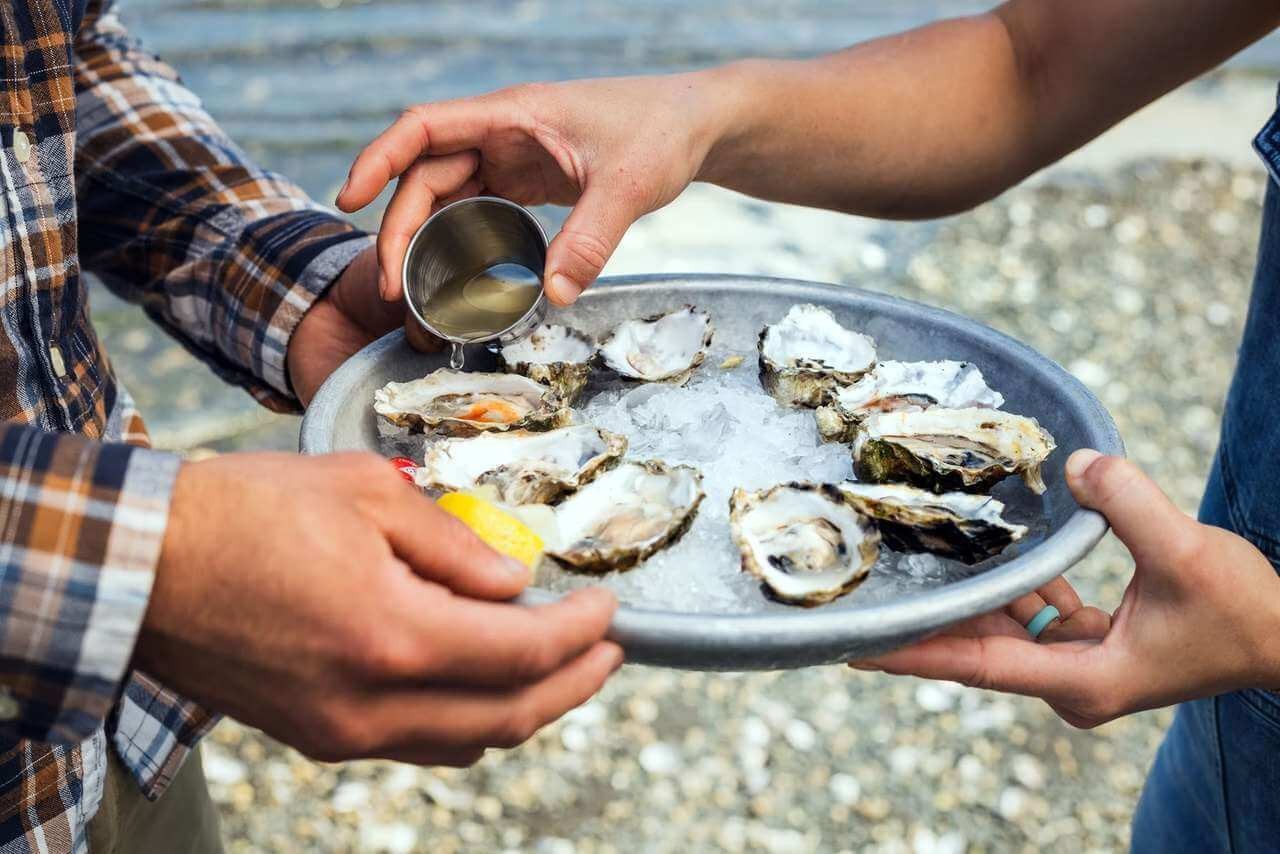
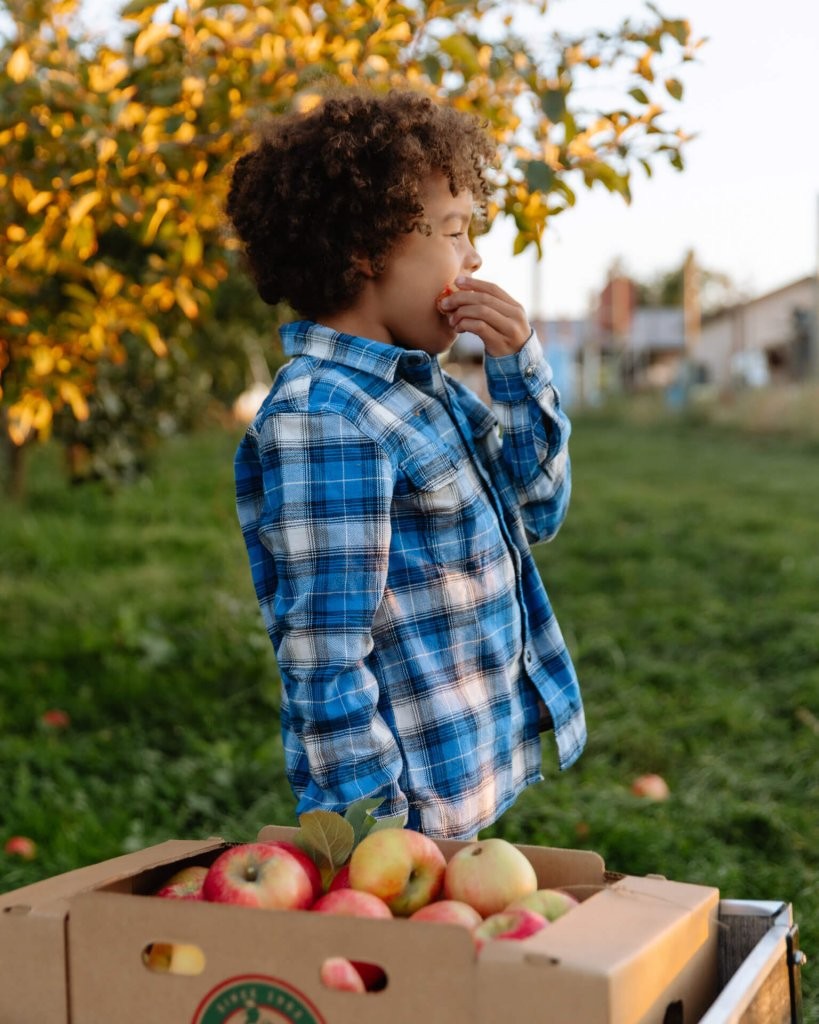
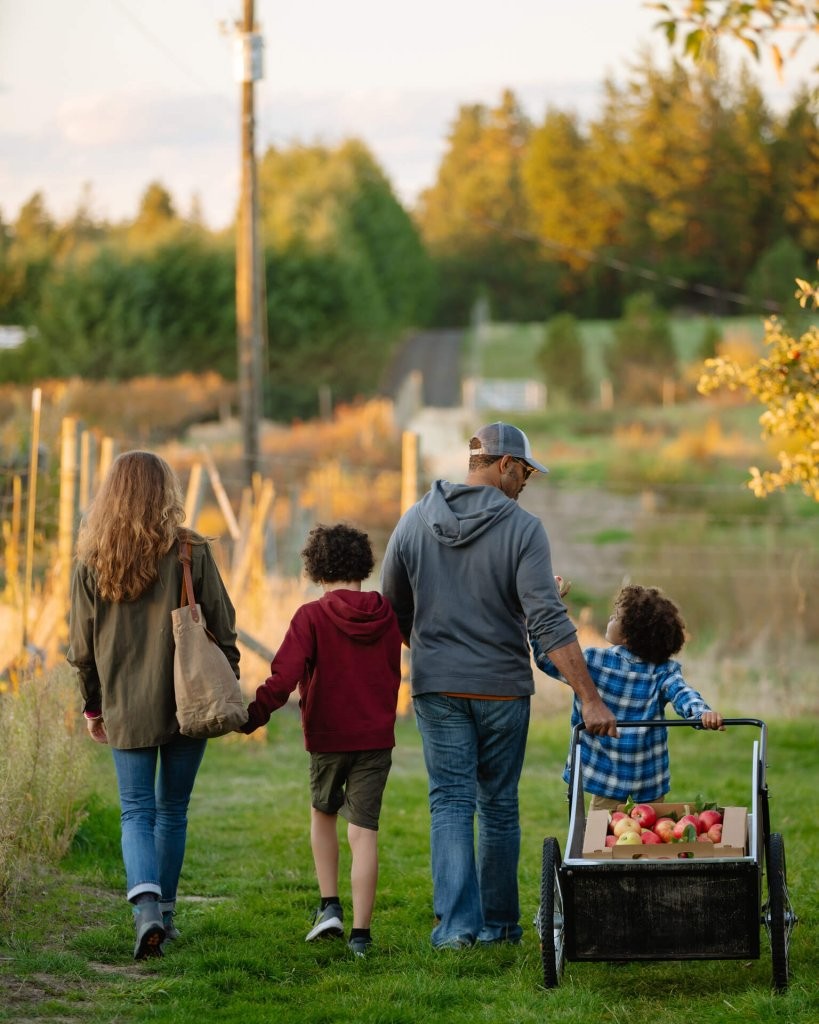
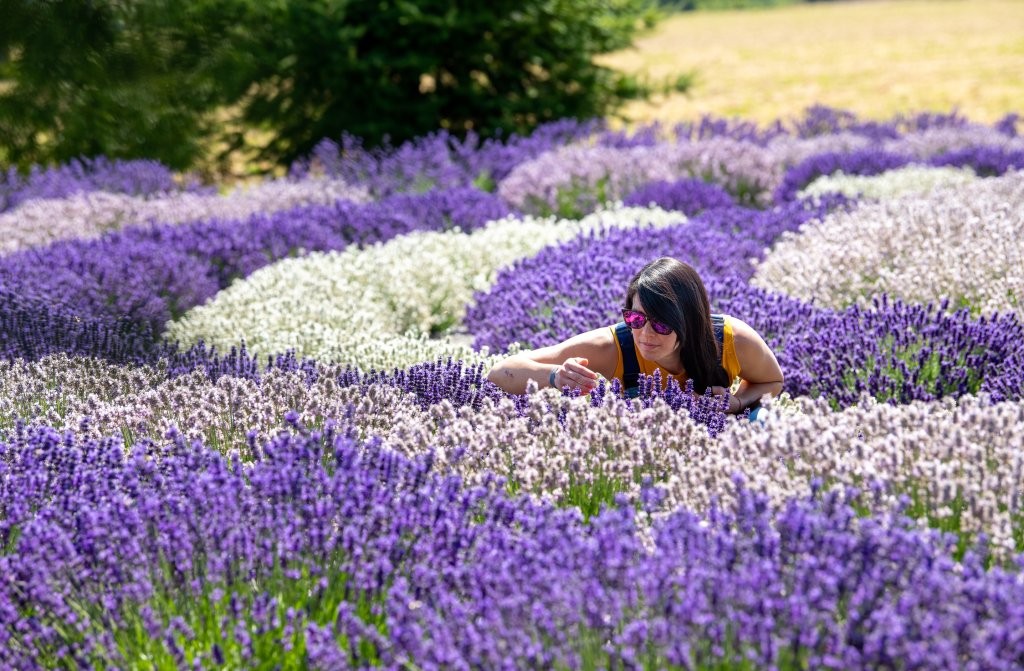
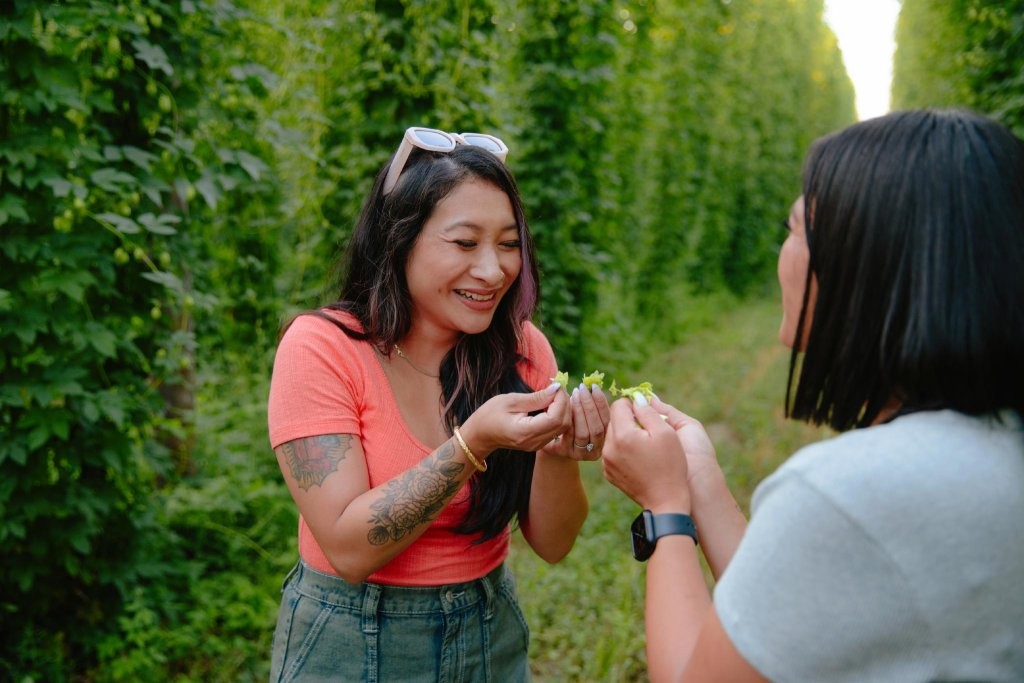
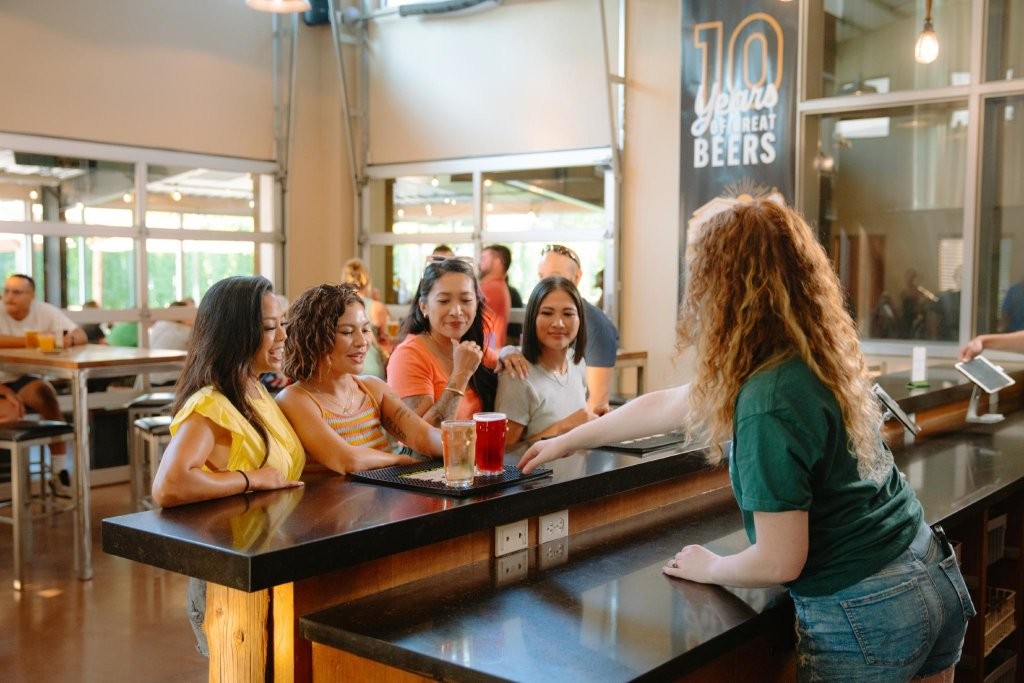

5. Washington’s Culinary Scene: A Blend of Tradition and Innovation
Washington’s culinary scene is a vibrant tapestry woven from tradition and innovation. The state’s chefs and food artisans are passionate about showcasing the local bounty, creating dishes that celebrate the flavors of the Pacific Northwest.
- Farm-to-Table Restaurants: Washington boasts a thriving farm-to-table restaurant scene, with chefs sourcing ingredients directly from local farms and producers. These restaurants offer a true taste of the region, with menus that change seasonally to reflect the freshest available ingredients.
- Pike Place Market: Seattle’s Pike Place Market is a must-visit destination for food lovers. This historic market is home to a wide variety of vendors selling fresh seafood, produce, and other local specialties.
- Food Festivals: Washington hosts numerous food festivals throughout the year, celebrating the state’s culinary heritage. These festivals offer a chance to sample local specialties, meet local chefs and producers, and learn about the state’s food culture.
6. The Future of Food in Washington State: Trends and Innovations
Washington’s culinary scene is constantly evolving, with new trends and innovations emerging all the time. Here are some of the trends shaping the future of food in the Evergreen State:
- Sustainable Food Practices: As consumers become more aware of the environmental impact of their food choices, there is a growing demand for sustainable food practices. Washington’s chefs and producers are responding to this demand by implementing sustainable farming practices, reducing food waste, and sourcing ingredients from local and sustainable sources.
- Plant-Based Cuisine: The rise of plant-based cuisine is another trend shaping the future of food in Washington State. Restaurants are increasingly offering vegetarian and vegan options, and plant-based ingredients are becoming more mainstream.
- Ethnic Food Influences: Washington’s diverse population is contributing to a vibrant and eclectic food scene. Restaurants are incorporating flavors and techniques from around the world, creating a unique and exciting culinary landscape.
7. Recipes Showcasing Washington’s Iconic Foods
To truly experience the flavors of Washington, try these recipes that highlight some of the state’s most iconic ingredients:
7.1. Cedar Plank Salmon
This classic preparation infuses the salmon with a smoky flavor that complements its richness.
Ingredients:
- 1.5 pounds salmon fillet, skin on
- 1 cedar plank, soaked in water for at least 2 hours
- 2 tablespoons olive oil
- 1 tablespoon lemon juice
- 1 teaspoon garlic powder
- Salt and pepper to taste
- Fresh herbs (dill, parsley) for garnish
Instructions:
- Preheat grill to medium heat (350°F).
- Place the soaked cedar plank on the grill.
- In a small bowl, whisk together olive oil, lemon juice, garlic powder, salt, and pepper.
- Brush the salmon fillet with the mixture.
- Place the salmon fillet, skin side down, on the cedar plank.
- Close the grill and cook for 15-20 minutes, or until the salmon is cooked through and flakes easily with a fork.
- Garnish with fresh herbs and serve.
7.2. Dungeness Crab Cakes
These crab cakes are a delicious way to showcase the sweet, succulent flavor of Dungeness crab.
Ingredients:
- 1 pound Dungeness crab meat, picked over
- 1/2 cup bread crumbs
- 1/4 cup mayonnaise
- 1 egg, beaten
- 1 tablespoon Dijon mustard
- 1 tablespoon lemon juice
- 1/4 cup chopped fresh parsley
- Salt and pepper to taste
- Olive oil for frying
Instructions:
- In a large bowl, combine crab meat, bread crumbs, mayonnaise, egg, Dijon mustard, lemon juice, parsley, salt, and pepper.
- Gently mix until just combined.
- Form the mixture into crab cakes, about 1/2 inch thick.
- Heat olive oil in a skillet over medium heat.
- Fry the crab cakes for 3-4 minutes per side, or until golden brown.
- Serve with your favorite dipping sauce.
7.3. Apple Crisp
This classic dessert is a perfect way to showcase Washington’s delicious apples.
Ingredients:
- 6 cups peeled and sliced apples (such as Honeycrisp or Granny Smith)
- 1/2 cup granulated sugar
- 1 teaspoon cinnamon
- 1/2 cup all-purpose flour
- 1/2 cup packed brown sugar
- 1/2 cup rolled oats
- 1/4 cup melted butter
Instructions:
- Preheat oven to 375°F (190°C).
- In a large bowl, combine apples, granulated sugar, and cinnamon.
- Pour the apple mixture into a baking dish.
- In a separate bowl, combine flour, brown sugar, and rolled oats.
- Stir in melted butter until the mixture resembles coarse crumbs.
- Sprinkle the crumb mixture over the apples.
- Bake for 30-40 minutes, or until the topping is golden brown and the apples are tender.
- Serve warm with vanilla ice cream.
8. Essential Tips for Exploring Washington’s Culinary Scene
Here are some essential tips for making the most of your culinary adventures in Washington State:
- Visit Local Farmers Markets: Farmers markets are a great way to discover local produce and support local farmers.
- Dine at Farm-to-Table Restaurants: Experience the freshest flavors of the region by dining at farm-to-table restaurants.
- Explore Pike Place Market: Seattle’s Pike Place Market is a must-visit destination for food lovers.
- Attend a Food Festival: Immerse yourself in the state’s culinary culture by attending a food festival.
- Ask Locals for Recommendations: Locals are a great source of information about the best places to eat and drink in Washington State.
9. FAQs About Washington’s Culinary Scene
- What is Washington State known for food-wise? Washington is known for its seafood (salmon, Dungeness crab, oysters), apples, Rainier cherries, and craft beer.
- What are some must-try dishes in Seattle? Clam chowder, salmon dishes, and anything with Dungeness crab are popular choices.
- Where can I find the best seafood in Washington? Coastal towns like Dungeness, Seattle, and Olympia are excellent places to find fresh seafood.
- What is geoduck, and how is it prepared? Geoduck is a large burrowing clam, often eaten raw as sashimi or cooked in stir-fries.
- When is the best time to visit Washington for fresh produce? Summer and fall are ideal for enjoying fresh fruits and vegetables.
- Are there any unique food festivals in Washington? The National Lentil Festival in Pullman and the Rhubarb Days festival in Sumner are unique culinary events.
- What kind of apples grow in Washington? Common varieties include Red Delicious, Golden Delicious, Gala, Fuji, Honeycrisp, and Granny Smith.
- Where can I find local craft beer in Washington? Yakima Valley and Seattle are home to many breweries offering craft beers made with local hops.
- What is farm-to-table dining like in Washington? Many restaurants source ingredients directly from local farms, offering seasonal menus that showcase the region’s bounty.
- How sustainable is Washington’s food scene? Washington is increasingly focused on sustainable food practices, with many farms and restaurants committed to environmental responsibility.
10. Explore More Culinary Delights with FOODS.EDU.VN
Ready to discover more about the incredible food scene in Washington and beyond? FOODS.EDU.VN is your ultimate resource for culinary knowledge, recipes, and insights. Whether you’re a home cook, a food enthusiast, or a culinary professional, we have something to inspire and inform you.
- Extensive Recipe Database: Access thousands of delicious recipes, from simple weeknight meals to gourmet creations.
- In-Depth Articles: Explore articles on food history, culinary techniques, ingredient guides, and more.
- Expert Tips and Advice: Learn from our team of culinary experts, who share their tips and tricks for success in the kitchen.
Visit foods.edu.vn today and unlock a world of culinary possibilities. Contact us at 1946 Campus Dr, Hyde Park, NY 12538, United States, or via Whatsapp at +1 845-452-9600.
We hope you enjoyed this culinary journey through Washington State. Bon appétit!
